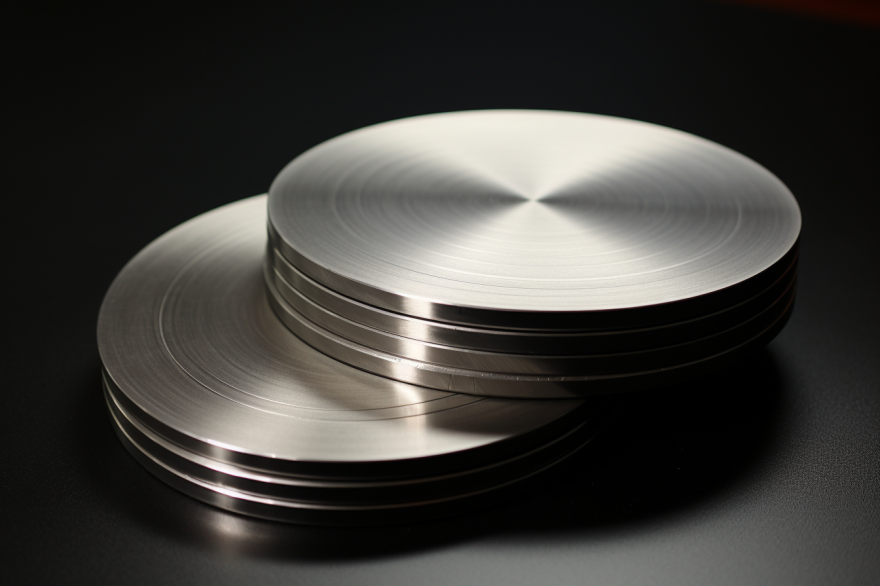Terminologies of Sputtering Coating
General Term
- Vacuum deposition: A group of methods used to deposit layers of material under a vacuum.
- Substrate: The material on which the film is deposited.
- Coating material: The raw material used to deposit the film, including sputtering targets and evaporation pellets materials.
- Sputtering target: A coating material used for sputtering in vacuum sputtering.
- Sputtering rate: The amount of sputtering material used over a given time interval divided by the time interval.
- Deposition rate: The amount of material deposited on the substrate over a given time interval divided by the time interval and the surface area of the substrate.
Information from SAM Sputter Target, a global coating materials supplier.
Technical Terminology
- Vacuum sputtering: The process by which inert gas ions bombard atoms (molecules) or radicals from the target surface in a vacuum.
- Reactive vacuum sputtering: Vacuum sputtering of film material of a desired chemical composition by reaction with a gas.
- Direct current diode sputtering: A direct current voltage between two electrodes causes the gas to self-sustain and discharge the target as a cathode.
- High-frequency diode sputtering: A high-frequency discharge is obtained by a high-frequency voltage between two electrodes to cause sputtering of a negative potential at a target.
- Ion beam sputtering: An ion beam obtained by a special ion source causes the sputtering of a target.
- Magnetron sputtering: The secondary electrons are bound to specific areas of the target surface using an orthogonal electromagnetic field formed on the surface of the target to enhance ionization efficiency and increase ion density and energy. Therefore, a very high sputtering rate can be obtained at a low voltage and a large current.
Special Parts
- Sputtering device: The components of a vacuum sputtering apparatus including a target and an auxiliary device necessary for sputtering (for example, a power supply device, a gas introduction device, etc.).
- Sputtering Target: The surface is bombarded with particles. The meaning of the target in this standard is the electrode composed of the sputtering material in the sputtering apparatus.
- Shutter: A device used to limit the coating in time and/or space and thereby achieve a certain film thickness distribution. The baffle can be either fixed or movable.
- Mask: A device used to cover part of the substrate and to limit the coating in space.
- Substrate heating device: A device that can heat a substrate or substrates to the desired temperature by heating in a vacuum coating device.
- Substrate cooling device: In a vacuum coating device, a device achieves the desired temperature by cooling a substrate or substrates.
Terminologies of Vacuum Evaporation
General Term
- Vacuum coating: A method of making a film on a substrate under vacuum.
- Substrate: The surface on which the film is deposited.
- Testing substrate: A substrate used for measurement and/or testing at the beginning of coating, during the coating process, and after coating.
- Coating material: The raw material used to make the film, mainly including sputtering targets and evaporation pellets materials.
- Evaporation material: A coating material used for evaporation in vacuum evaporation.
- Film material: the material constituting the film layer.
- Evaporation rate: the amount of material evaporated during a given time interval divided by
- Deposition rate: The amount of material deposited on a substrate over a given time interval divided by the time interval and the surface area of the substrate.
- Coating angle: The angle between the direction of the particles incident on the substrate and the normal to the surface being plated.
Information from SAM Sputter Target, a global coating materials supplier.
Technical Terminology
- Vacuum evaporation coating: A vacuum coating process for evaporating a coating material.
- Simultaneous evaporation: Vacuum evaporation of various evaporation materials simultaneously onto the substrate by several evaporators.
- Evaporation field evaporation: Evaporation of a material evaporated from the evaporation field onto a substrate for evaporation (this process is applied to large-area evaporation to obtain a desired film thickness distribution).
- Reactive vacuum evaporation: Vacuum evaporation of film material of a desired chemical composition by reaction with a gas.
- Reactive vacuum evaporation in evaporator: Reacts with various evaporation materials in the evaporator to obtain vacuum evaporation of the desired chemical composition film material.
- Direct heating evaporation: The heat necessary to evaporate the evaporation of the material is the same as the heat of the evaporation material (in the crucible or not).
- Induction heating evaporation: The evaporation material is heated by induction eddy current.
- Electron beam evaporation: evaporation of heated material by electron bombardment.
- Laser beam evaporation: evaporation of the material by laser beam heating.
- Indirect heating evaporation: In a heating device (for example, a boat-shaped evaporator, a crucible, a filament, a heating plate, a heating rod, a spiral coil, etc.), the evaporation material is subjected to the heat necessary for evaporation, and is transferred to the evaporation material by heat conduction or heat radiation.
- Flash evaporation: intermittently evaporate a very small amount of evaporating material.
Special Parts
- Coating chamber: A part of a vacuum coating equipment that performs the actual coating process.
- Evaporator device: A vacuum coating device that includes an evaporator and all components necessary for its operation (such as power supply, supply, cooling devices, etc.).
- Evaporator: A device that evaporates directly within it, such as a boat-shaped evaporator, crucible, filament, heating plate, heating rod, spiral coil, etc., and if necessary, the evaporation material itself.
- Evaporator by direct heat: An evaporator in which the evaporation material itself is heated.
- Evaporator by indirect heat: An evaporator in which an evaporation material is heated by heat conduction or heat radiation.
- Evaporation field: A field formed by heating the same vaporized material by several arrays of evaporators.


